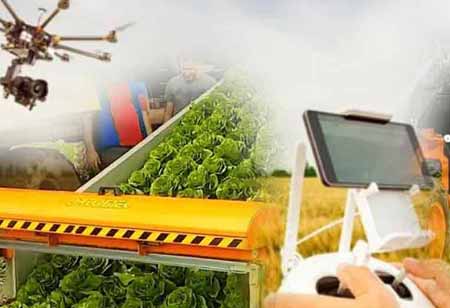Thank you for Subscribing to Agri Business Review Weekly Brief
Optimizing Equipment Usage for Peak Farm Efficiency
In the contemporary agricultural landscape, maximizing efficiency and productivity is essential for farm success.

By
Agri Business Review | Monday, June 24, 2024
Stay ahead of the industry with exclusive feature stories on the top companies, expert insights and the latest news delivered straight to your inbox. Subscribe today.
Farmers can enhance efficiency and productivity in agriculture by conducting an Equipment Audit, prioritizing preventive maintenance, optimizing machine settings, exploring automation options, and optimizing logistics and workflow.
FREMONT, CA: In the contemporary agricultural landscape, maximizing efficiency and productivity is essential for farm success. Optimizing the utilization of agricultural machinery is a key element in attaining this objective.
To optimize machinery for peak farm performance, follow these key strategies:
Conduct an Equipment Audit: Begin by thoroughly analyzing current equipment use. Determine how many hours per year each machine is actively working and identify tasks that cause bottlenecks or inefficiencies. Evaluate the suitability of equipment based on factors such as field size, crop types, and workforce size. Identify any underutilized machinery and consider consolidating tasks with multi-purpose equipment. Additionally, research and adopt the latest precision agriculture technologies, such as GPS guidance systems and variable rate technology, to enhance field coverage and targeted application of fertilizers and pesticides.
Prioritize Preventive Maintenance: Develop a regular maintenance schedule based on manufacturer recommendations and specific usage patterns to ensure equipment operates smoothly and efficiently. Invest in preventive maintenance software to track tasks, record service history, and automate parts ordering, which helps prevent costly breakdowns and unexpected downtime during critical periods. Provide proper training for operators to identify potential problems early, preventing minor issues from escalating into major repairs.
Optimize Machine Settings for Efficiency: Match the equipment to the task at hand, ensuring that the machinery used is appropriate for the field size and conditions. Consult manufacturer manuals and experienced operators to fine-tune settings like tillage depth, planting density, and sprayer application rates. Utilize data from yield monitors, soil sensors, and weather stations to make informed decisions about equipment settings and resource allocation, significantly impacting yield, resource use, and fuel efficiency.
Consider Automation and Smart Technologies: Explore automation options such as self-driving tractors, robotic milking systems, and automated irrigation solutions. Although these technologies may require an initial investment, they can significantly improve efficiency and free up labor for higher-value tasks. Invest in smart equipment equipped with sensors and data loggers to analyze machine performance, identify areas for improvement, and optimize overall farm operations.
Optimize Logistics and Workflow: Efficiently schedule equipment to minimize downtime between tasks, considering factors like field preparation, planting windows, and harvesting times. Strategically position equipment and storage facilities to reduce travel time between fields and decrease fuel consumption. Ensure smooth coordination with external service providers for harvesting or transportation to avoid delays and equipment idling.
Implementing these strategies can help optimize equipment usage and achieve new levels of efficiency on farm. It is important to remember that this optimization is an ongoing process. Regularly monitor progress, adapt strategies as needed, and embrace new technologies to ensure the farm continues to prosper.





